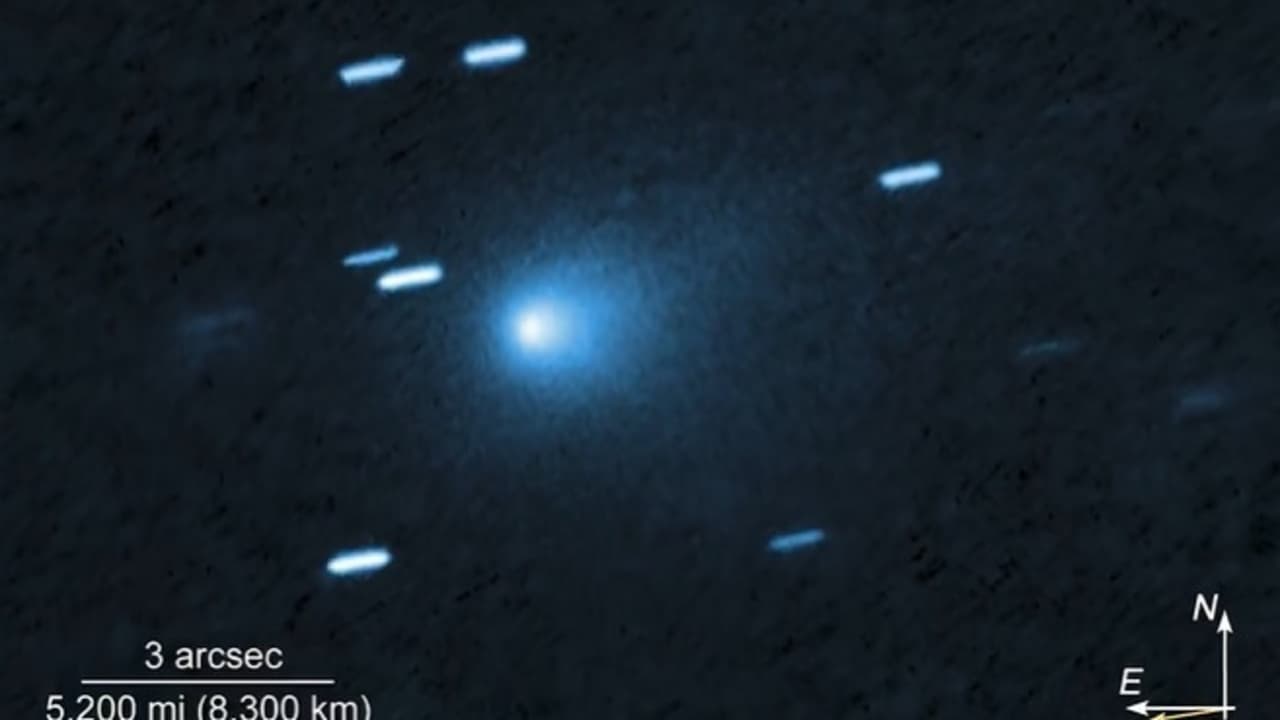NASA’s Hubble Space Telescope has captured the sharpest image of interstellar comet 3I/ATLAS, revealing details about its size, speed, and dust activity. Discovered in July 2025, the comet is the fastest-known visitor to our solar system.
Astronomers have taken the clearest-ever picture of the unusual interstellar comet 3I/ATLAS using NASA’s Hubble Space Telescope. The comet, which is passing through our solar system, is being studied by several NASA missions to learn more about its size, makeup, and behavior. Even though it poses no danger to Earth, the discovery is important for NASA’s ongoing work to find, track, and understand objects that pass close to our planet.
Pinpointing the comet’s size
Hubble’s data allowed scientists to put a tighter limit on the size of the comet’s icy core, called the nucleus. It could be as large as 3.5 miles (5.6 km) or as small as 1,000 feet (320 meters) across. The solid nucleus is still hidden from direct view, even for Hubble. To learn more, astronomers will combine Hubble’s findings with observations from other missions such as the James Webb Space Telescope, TESS, the Neil Gehrels Swift Observatory, and NASA’s work with the W.M. Keck Observatory.
Scroll to load tweet…
Signs of activity like solar system comets
Hubble also caught a plume of dust coming from the side of the comet warmed by the Sun, along with a faint dust tail trailing behind. The dust-loss rate matches that of comets first spotted around 300 million miles from the Sun, a pattern seen in comets that formed in our own solar system. The big difference here: 3I/ATLAS did not form in our solar system at all, but in another star system somewhere in the Milky Way.
A record-breaking speed
3I/ATLAS is racing through our solar system at 130,000 miles per hour (209,000 km/h), the fastest speed ever measured for a solar system visitor. This extreme speed shows it has been traveling in interstellar space for billions of years, gaining momentum through the gravitational pull of countless stars and clouds of gas it passed along the way.
“No one knows where the comet came from,” said David Jewitt, who leads the Hubble observation team at the University of California, Los Angeles. “It’s like glimpsing a rifle bullet for a thousandth of a second. You can’t trace it back to its starting point.”
Part of a hidden population of space wanderers
According to Jewitt, 3I/ATLAS is part of a larger, previously unseen group of interstellar objects that new sky survey technology is now able to detect. “We’ve crossed a threshold,” he said, noting that more such discoveries can be expected in the future. The comet was first spotted on July 1, 2025, by the NASA-funded Asteroid Terrestrial-impact Last Alert System (ATLAS) at a distance of 420 million miles from the Sun. ATLAS is an early warning system for asteroid impacts, run by the University of Hawai‘i. 3I/ATLAS should remain visible to powerful ground-based telescopes until September, when it will move too close to the Sun to see. It is expected to reappear in early December on the other side of the Sun.
Meanwhile, Hubble, now in its fourth decade of service, continues to make discoveries that change how we understand the universe. Operated by NASA in partnership with the European Space Agency, Hubble is supported by teams at NASA’s Goddard Space Flight Center, Lockheed Martin Space and the Space Telescope Science Institute.
